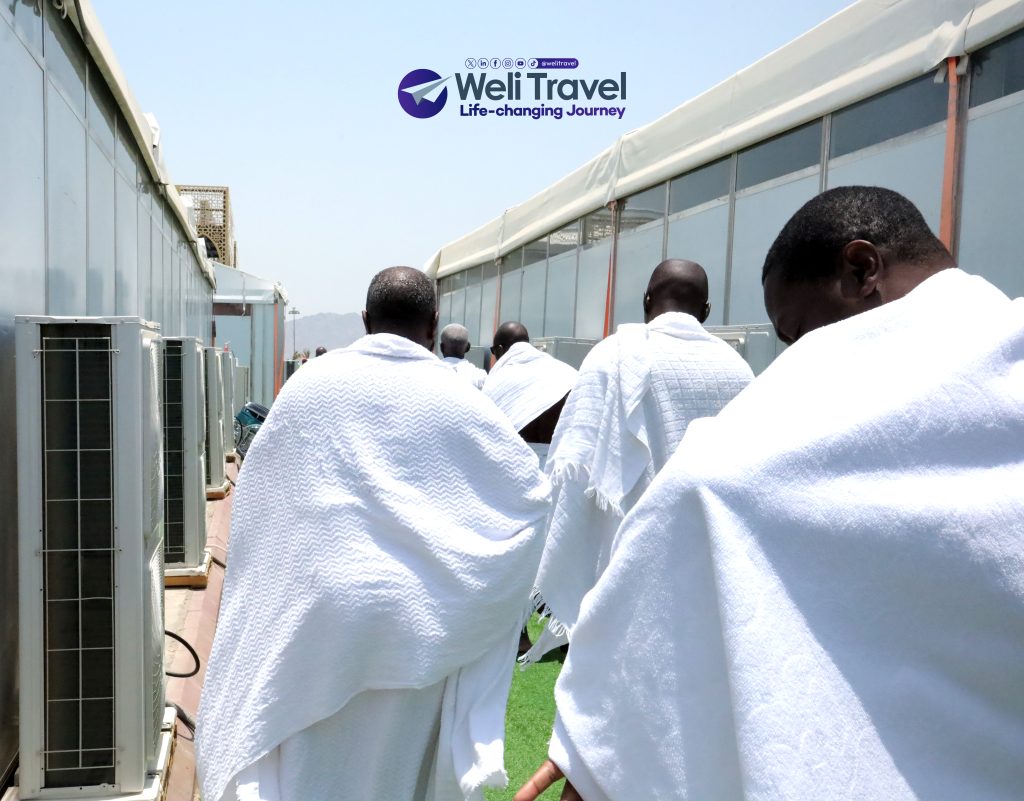7 Things You Didn’t Know About Hajj

Introduction
Hajj is the annual Islamic pilgrimage to Mecca and one of the Five Pillars of Islam, required once in a lifetime for all physically and financially able Muslims. Each year, it brings together over 1.5 million pilgrims from around the globe during Dhul-Hijja, culminating in Eid al-Adha celebrations that commemorate Prophet Ibrahim’s willingness to sacrifice his son, While its rituals—the Tawaf, Sa’i, standing at Arafat, stoning the Jamarat, and more—are well known, beneath each lie captivating stories and scientific marvels.
The Kaaba’s Intricate Architecture
From Abraham to Modern Renovations
Islamic tradition holds that Prophet Ibrahim and his son Ismail laid the Kaaba’s original foundations, making it the earliest sanctuary dedicated to monotheism. Over the centuries, the Quraysh tribe rebuilt it in 608 CE, and subsequent major restorations occurred under the Umayyads (7th c.), Abbasids (8th–9th c.), Ottomans (17th c.), and modern Saudi authorities (20th c.)
Architectural Details
Measuring roughly 12 m × 10 m × 15 m, the Kaaba is built of grey stone from the surrounding hills and stands on a foundation of mortar mixed with limestone fragments. Inside, you’ll find a marble-clad floor, wooden roof beams, and a silver-and-gold door added by Ottoman Sultan Mahmud II in 1817. The Kiswah, the black cloth covering, is replaced annually during Hajj with over 120 kg of embroidered silk and gold thread.
The Journey of Zamzam Water
Geological Marvel
The Zamzam Well lies about 20 m east of the Kaaba, tapping a natural aquifer replenished by seasonal rainfall in the surrounding Hijaz mountains. Its porous limestone geology allows rapid percolation, creating a self-renewing source that never dries up despite millions of pilgrims drawing water each year.
Mineral Composition and Health Benefits
Analyses of Zamzam water reveal elevated calcium, magnesium, and potassium levels—minerals known to support hydration and cardiovascular health. Believers view Zamzam as “miraculous” not only for its unceasing flow but also for its reputed therapeutic properties in treating ailments like digestive and skin disorders.
The Protective Role of Birds
The Year of the Elephant
In 570 CE, Abraha’s Aksumite army marched on Mecca to destroy the Kaaba. The Qur’an’s Surah al-Fil recounts that God sent flocks of Ababil birds, each carrying three pebbles, to pelt the invaders and miraculously defend the sanctuary.
Symbolism and Legacy
Known as “Ababil” (أبـابـيـل), these birds symbolize divine guardianship and are celebrated in Islamic art and literature as a prelude to the Prophet Muhammad’s birth later that year. Their intervention underscores the Kaaba’s sanctity long before Islam formally emerged.
The Evolution of the Jamarat Ritual
Early Risks and Tragedies
Originally stoning the Jamarat pillars took place on a single-level, narrow plain in Mina, leading to deadly crowd crushes—most tragically in September 2015 when over 2,400 pilgrims perished. Mismanagement and opposing crowd flows compounded the catastrophe.
Engineering a Safer Ritual
After consulting experts like Professor Keith Still, Saudi authorities built a multi-level Jamarat Bridge with one-way flows, expanded platforms, and evacuation ramps—dramatically reducing bottlenecks and fatalities. Arab News reports that the redesigned structure can now process over 400,000 pilgrims per hour at peak times.
Technological Marvels at Hajj
Smart Bracelets and Biometric IDs
Since 2019, every pilgrim receives an e-bracelet storing biometric data, health records, and emergency contacts. These “Hajj bracelets” enable rapid medical response and help reunite lost pilgrims with their groups within minutes.
AI, Drones, and Traffic Control
Cutting-edge AI analyzes crowd densities in real time, while drones equipped with thermal cameras detect health emergencies in Mosques and ritual site. Saudi “Hajj Hackathons” further spur innovations in navigation, language translation, and predictive crowd management apps.
Cultural Diversity on a Global Scale
A True Melting Pot
Recently, about 1.83 million pilgrims from over 180 countries performed Hajj, representing nearly every Muslim-majority nation—Indonesia, Nigeria, Pakistan, Egypt, and beyond. Each brings unique languages, cuisines, and traditions, yet all don identical Ihram garments to symbolize equality before God.
Unity of the Ummah
This annual convergence exemplifies the Islamic ideal of Ummah—transcending ethnic and socioeconomic divides. Saudi organizers deploy multilingual signage, dedicated country-specific camps, and volunteer guides (“Mutawwifs”) to facilitate worship in dozens of languages.
The Ministry Dedicated Solely to Hajj
Structure and Mandate
Founded in 1945, the Ministry of Hajj and Umrah (MHU) coordinates visas, transportation, health services, accommodation, and the annual pilgrimage under a Supreme Hajj Committee. Headquartered in Mecca and led since 2021 by Tawfig Al-Rabiah, the MHU works year-round to plan logistics for over two million visitors.
Strategic Initiatives
In line with Saudi Vision 2030, the MHU has established an electronic control center, expanded e-visa programs, and issued over 4 million Umrah visas in 2019 alone. During the COVID-19 pandemic, they successfully limited Hajj to 10,000 pilgrims in June 2020—demonstrating agile crisis management.
visit us on :
Weli Travel, Uganda’s leading Hajj and Umrah travel agency, offers diverse, tailored packages to ensure your pilgrimage is extraordinary. We provide Umrah Visas and comprehensive travel solutions, making every detail seamless. Trust Weli Travel to create beautiful, unforgettable journeys for you


2 Responses
Anadolu Yakası su kaçak tespiti Beykoz’daki evimdeki su kaçağını buldular ve kısa sürede onardılar. Hizmetlerinden çok memnunum. https://cottoecrudo.it/?p=31082
Get a massive 200% bonus on your first deposit and boost your starting balance up to $ 200. betwinner guide, Betwinner splits your bonus between sports and games to double your chances of winning.